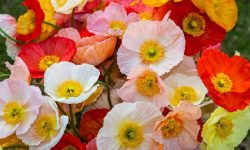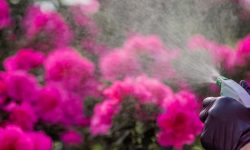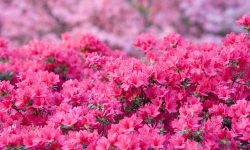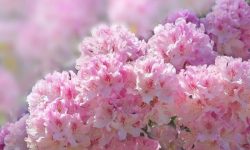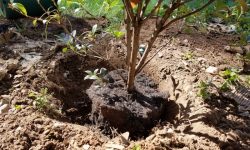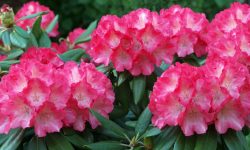Poppies are among the most captivating flowers you can grow, admired for their silky petals and radiant colors. Each bloom seems to capture a piece of sunlight, creating a moment of magic in any garden. Yet many gardeners wonder—when do poppies bloom, and how can you ensure they appear at their peak? The timing depends on the type of poppy, the climate, and the care they receive throughout the year. Understanding these factors allows you to plan your garden so that poppies flower beautifully and consistently, offering color and charm for weeks.
Beyond their striking appearance, poppies symbolize peace, remembrance, and renewal. Their blossoms, though fleeting, bring unmatched elegance to any landscape. Knowing exactly when and how poppies bloom helps gardeners appreciate their delicate rhythm and maximize their flowering season. This detailed guide explores every stage of poppy growth, from seed to bloom, and reveals expert care techniques to make them thrive longer. With the right knowledge, you can enjoy waves of poppy blooms that transform your garden into a living masterpiece each season.
When Do Poppies Bloom Naturally?
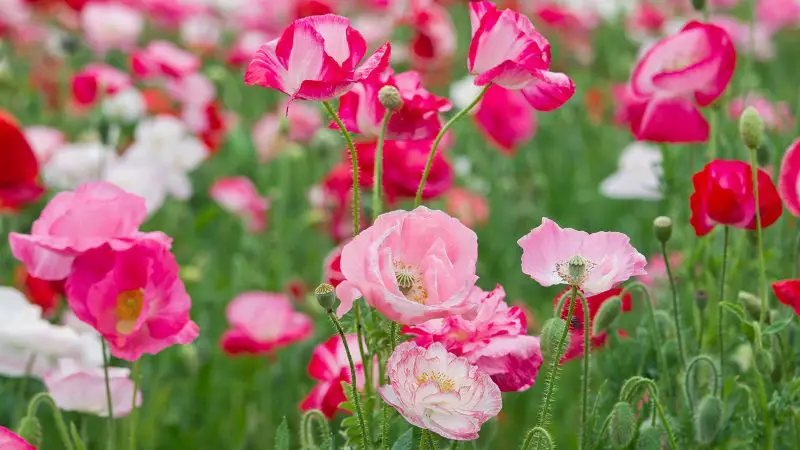
The natural blooming period of poppies depends greatly on their species, regional climate, and soil conditions. In general, most poppies bloom between late spring and early summer, typically from April through June. In cooler northern regions, the season can extend into July, while in warmer areas, flowering may begin as early as March. Annual poppies such as the Shirley and Corn poppy are among the first to bloom, filling fields with red, pink, or white blossoms that last for several weeks. Perennial types like the Oriental and Iceland poppies bloom a little later but produce larger, longer-lasting flowers that can reappear if well cared for.
The length of each bloom also depends on how the plant adapts to its environment. For example, the California poppy can flower for months in mild climates, often blooming from spring until early autumn. It thrives in bright, dry conditions and even reseeds itself easily, creating an almost continuous display. Conversely, the Himalayan blue poppy prefers cooler temperatures and moist soil, showing its remarkable sky-blue flowers during late spring or early summer. When gardeners grow a mix of species adapted to local weather, they can enjoy a sequence of blooms that lasts much longer than a single variety would provide.
Environmental factors play an essential role in natural bloom timing. Poppies need full sunlight, well-drained soil, and moderate moisture to flourish. Consistent weather patterns help maintain a balanced growth cycle, while extreme heat or cold can disrupt it. Longer daylight hours encourage bud formation, while steady watering keeps the petals vibrant. By understanding how nature influences each species, gardeners can synchronize planting and care to ensure their poppies bloom at the most beautiful and natural time every year.
Different Types of Poppies and Their Blooming Seasons
Oriental Poppy (Papaver orientale)
The Oriental poppy is one of the most majestic perennial varieties, adored for its large, crepe-like petals in vivid shades of red, orange, pink, and white. These showy blooms appear in late spring to early summer, usually between May and June, depending on the region. Each individual flower lasts around three to five days, but the plant produces multiple buds that open sequentially, giving a blooming period of several weeks. Oriental poppies prefer full sun and cooler night temperatures, which enhance both flower size and color intensity.
After flowering, the foliage often dies back in midsummer before returning again in fall. To encourage a second round of blooms, gardeners should cut the stems down to the base after flowering and water moderately. A light layer of compost or mulch helps retain moisture and protect roots. In USDA zones 3 to 7, Oriental poppies thrive year after year, growing stronger and more vibrant with each season. With good care, these stunning blooms can transform a late-spring garden into a breathtaking display of color and elegance.
California Poppy (Eschscholzia californica)
The California poppy is famous for its glowing golden-orange flowers that brighten hillsides and gardens across warm regions. As the official state flower of California, it thrives under full sunlight and dry, sandy soil conditions. Blooming begins in late spring and often continues through summer, sometimes lasting until early fall in mild climates. Each bloom opens in the morning and closes at dusk or during cloudy days, creating a rhythm of daily renewal. The flowers last only a few days each, but the plant continuously produces new buds, ensuring months of color.
California poppies are annuals that readily reseed, creating self-sustaining colonies that return year after year without replanting. They prefer USDA zones 6 to 10 and flourish with little care—just occasional watering and minimal fertilization. Overwatering shortens the bloom period and may cause root rot. In well-drained soil, these poppies remain vibrant even in dry conditions. Their long flowering season, ease of growth, and brilliant colors make them a favorite choice for naturalized gardens and sunny borders across the West Coast.
Iceland Poppy (Papaver nudicaule)
The Iceland poppy offers one of the longest and most colorful bloom periods of any poppy species. Its delicate, paper-thin petals come in soft pastel shades of white, yellow, orange, and coral. Unlike many poppies, this species thrives in cooler climates and begins blooming early in the season—often from March to midsummer. Each flower lasts about a week, and with consistent deadheading, new buds keep appearing, extending the flowering season for several months. In mild conditions, Iceland poppies may even bloom twice a year.
Thriving best in USDA zones 2 to 7, Iceland poppies prefer full sunlight and sandy, well-drained soil. They tolerate light frost but dislike excessive heat. In warm summers, cutting the plants back after blooming can encourage late-season flowers once temperatures cool. Moderate watering keeps roots hydrated while preventing rot. Their continuous blooms, gentle fragrance, and airy growth habit make them ideal for borders, cottage gardens, and spring floral arrangements.
Himalayan Blue Poppy (Meconopsis betonicifolia)
The Himalayan blue poppy is a legendary flower admired for its mesmerizing, sky-blue petals that glow under soft light. Native to the cool, misty regions of the Himalayas, it flourishes in moist, well-drained soil and partial shade. Blooming usually occurs in late spring through early summer, when temperatures remain mild. Each flower lasts five to seven days, but the plant produces several buds that open gradually, extending the bloom time for up to four weeks. Its unique color and graceful shape give it a rare, almost ethereal beauty in the garden.
In USDA zones 3 to 6, the Himalayan blue poppy performs best when protected from strong sunlight and heat. Consistent soil moisture is vital, as dryness quickly halts flowering. Mulching around the base helps preserve cool soil conditions and maintain humidity. This poppy is more demanding than most but rewards careful growers with unforgettable displays of true-blue blooms. When nurtured properly, it becomes a showpiece that captures attention and symbolizes tranquility and resilience in shaded gardens.
Environmental Factors That Affect Poppy Blooming Time
Temperature and Climate
Temperature has the most direct influence on poppy bloom timing and duration. Most species thrive in mild conditions between 55°F and 70°F. When daytime temperatures remain stable, poppies bloom fully and retain their vivid colors longer. In regions with hot summers, high heat can trigger early petal drop or even dormancy. Conversely, in cooler climates, the blooms appear later but last longer, as the petals remain firm under lower temperatures. Frost or sudden cold snaps can harm flower buds before they open, delaying or reducing the total number of blossoms.
Adapting planting times to regional weather patterns helps optimize blooming. In hot areas, planting poppies during late fall or early winter ensures that flowering begins before intense heat arrives. In colder climates, sowing seeds indoors or early in spring allows plants to establish before bloom season. Gardeners can also use mulch to moderate soil temperature and protect roots. When temperature and seasonal timing align, poppies bloom in their fullest glory for weeks at a time.
Sunlight Exposure
Sunlight is essential for triggering strong, healthy poppy blooms. These flowers are sun-lovers, performing best with at least six to eight hours of direct light per day. Adequate sunlight ensures rich pigmentation in the petals and promotes vigorous stem growth. Without enough sun, poppies may produce fewer buds, and blooms may appear pale or small. In partial shade, the plant’s energy shifts toward survival rather than flowering, drastically shortening the blooming window.
Too much sunlight, however, can also be harmful in extremely hot regions. Harsh afternoon rays can cause petals to fade quickly or curl at the edges. Providing light afternoon shade or planting near taller companion plants helps reduce stress during heat peaks. Morning sun exposure, paired with cooler evenings, extends bloom longevity. In regions with cloudy or short days, positioning poppies in south-facing areas maximizes light absorption. The right light balance leads to stronger plants and longer-lasting, radiant blooms.
Soil Quality and Drainage
Healthy, well-structured soil is one of the strongest predictors of how long poppies will bloom. These flowers thrive in sandy or loamy soils that drain efficiently while holding moderate moisture. Compacted soil restricts airflow and causes water retention, leading to root rot or nutrient lockout. A healthy soil mix rich in organic matter allows roots to access both water and oxygen, supporting consistent bud formation and prolonged blooming. Slightly alkaline to neutral pH (6.5–7.5) enhances nutrient absorption and strengthens stem growth.
Before planting, improving soil texture pays long-term dividends. Mixing compost, perlite, or coarse sand boosts drainage and prevents water stagnation. Organic mulch helps retain moisture while keeping the root zone cool. Gardeners should also avoid over-fertilizing, as nutrient excess can cause lush foliage but fewer flowers. Poppies grown in well-draining, balanced soil produce stronger blooms, resist disease, and maintain vibrant color for weeks longer than those in poor soil conditions. Healthy soil is truly the foundation for lasting beauty.
Water and Humidity
Water and humidity balance is critical to maintaining steady poppy blooms throughout the season. Poppies dislike both drought and excessive moisture, requiring deep, infrequent watering to encourage deep root development. Overwatering suffocates roots, while underwatering causes buds to dry before opening. Morning watering is ideal, allowing leaves to dry by evening and reducing the chance of fungal diseases. Drip irrigation or soaker hoses work best, keeping moisture at the root level without wetting petals.
Humidity also affects bloom duration and quality. In humid climates, flowers may stick together or decay faster, especially if airflow is limited. To counter this, ensure good spacing between plants and use organic mulch to regulate moisture. In arid environments, occasional misting or shaded watering can prevent petals from scorching. Consistent humidity management helps maintain steady bud production, ensuring the plant continues to bloom over an extended period. When moisture levels stay balanced, poppies reward gardeners with stronger, brighter, and longer-lasting flowers.
How to Time Your Poppy Planting for Perfect Blooms
Timing your poppy planting correctly is the key to ensuring a strong and well-timed bloom. The ideal planting period depends on the local climate and the specific poppy species. In cooler climates, poppy seeds should be sown in early spring as soon as the soil can be worked. These seeds need light to germinate, so they should only be pressed gently into the surface rather than buried. In mild or warm regions, poppies can be planted in late fall or early winter, allowing seeds to establish roots before blooming in spring. This seasonal adjustment ensures that plants mature at the right time for optimal flowering.
Poppies have a natural rhythm that aligns with temperature changes and daylight hours. The goal is to have plants mature during cool weather, right before the summer heat arrives. Early planting in spring gives annual poppies enough time to grow strong stems and form buds by late spring. For perennials like Oriental or Iceland poppies, planting in fall allows root systems to develop deeply, resulting in more robust and earlier blooms the following year. Gardeners who track local frost dates can plan their sowing window more accurately.
For continuous color, staggering your planting over several weeks ensures a steady bloom cycle. Sowing seeds every two to three weeks during the growing season encourages overlapping waves of flowers. This technique works particularly well with fast-germinating varieties such as the Shirley or California poppy. By carefully aligning planting time with your region’s seasonal pattern, you can enjoy a seamless succession of blossoms that keeps your garden glowing with color for months on end.
Care Practices That Influence Bloom Duration
Proper care throughout the growing season plays a vital role in determining how long poppies stay in bloom. These flowers are resilient, but they respond best to consistent attention and balance. The first key factor is watering. Poppies prefer deep, infrequent watering rather than shallow, frequent ones. Overwatering leads to root rot, while under-watering causes buds to dry out before opening. The goal is to keep the soil moist but never soggy. Morning watering works best, allowing foliage to dry during the day and reducing fungal risks. Mulching around the base also helps retain soil moisture and regulate temperature, extending the bloom period.
Deadheading, or removing spent flowers, is another essential practice to prolong flowering. Once poppies finish blooming, the plant’s energy shifts toward seed production. By cutting off faded blooms, gardeners redirect that energy toward creating new buds instead. Regular deadheading encourages continuous flowering for several extra weeks. For perennial species like Oriental and Iceland poppies, trimming the stems down to the base after the first bloom often results in a second, smaller flush later in the season. Consistent pruning also prevents the spread of disease and keeps the plants tidy.
Fertilization and soil maintenance complete the foundation for lasting blooms. Poppies do not require heavy feeding but benefit from a balanced fertilizer applied in early growth stages. Avoid high-nitrogen mixes, which encourage leafy growth rather than flowers. Instead, use organic compost or a slow-release formula to nourish roots steadily. Pairing this with proper spacing and airflow reduces humidity and fungal problems. When these care practices are followed together, poppies can maintain their beauty for much longer, rewarding gardeners with an extended season of radiant color.
Common Mistakes That Shorten the Blooming Season
Overwatering and Poor Drainage
Overwatering remains one of the most frequent and damaging mistakes in poppy care. These flowers thrive in soil that drains quickly, and even short periods of waterlogging can suffocate roots. When oxygen flow is restricted, poppies lose vitality, and bud development slows or stops entirely. Root rot, mold, and fungal infections are common side effects of excessive watering. Gardeners often misinterpret wilting leaves as thirst, leading them to water more, which worsens the issue. If soil stays damp for too long, blooms fade early and stems collapse.
To avoid this, always allow the top inch of soil to dry before the next watering. Deep watering once or twice a week encourages strong, drought-tolerant roots. Mixing coarse sand, gravel, or perlite into planting areas significantly improves aeration. Raised beds or slightly elevated garden sections help prevent moisture buildup around roots. A layer of mulch conserves water without trapping excess moisture. With balanced watering and proper drainage, poppies stay vigorous, producing fresh, colorful flowers for a much longer period.
Excess Fertilization
Applying too much fertilizer can cause more harm than good for poppies. These plants prefer lean soil and grow best when nutrients are available in moderate amounts. Overfertilization—especially with nitrogen-heavy products—forces the plant to produce excessive leafy growth at the expense of flowers. As a result, stems become soft and fragile, and bloom formation slows. In addition, nutrient buildup can alter soil chemistry, reducing beneficial microbes and restricting root absorption. Over time, this imbalance can weaken plants and shorten their lifespan.
To encourage lasting blooms, feed sparingly using a balanced fertilizer such as 5-10-10 or organic compost. Apply it once in early spring before the bloom cycle begins, avoiding repeated doses during flowering. For long-term soil health, incorporate organic materials like worm castings or bone meal that release nutrients gradually. Poppies thrive in modest, nutrient-stable conditions where energy is naturally directed toward producing strong buds and vivid petals. Maintaining restraint in fertilization ensures healthier plants and a much longer bloom duration.
Lack of Deadheading and Maintenance
Neglecting deadheading is one of the most common reasons poppies stop flowering prematurely. Once a bloom fades, the plant instinctively redirects its energy toward forming seed pods. Without removing spent flowers, the flowering cycle ends early, as the plant believes its reproductive goal is complete. Over time, neglected poppies lose their vigor, producing fewer blossoms in subsequent years. Even healthy plants can appear dull or sparse if they are left untended after their first flush of blooms.
Regular maintenance keeps poppies active and vibrant. Deadhead flowers as soon as petals begin to fall to encourage new buds to form. Cutting back old stems after the first bloom often triggers regrowth, especially in perennial species like Oriental and Iceland poppies. Clearing away faded leaves improves airflow and prevents fungal buildup. For gardeners aiming for continuous color, this simple routine extends the blooming phase by several weeks. With consistent attention and light pruning, poppies can maintain their brilliance well into late summer.
Best Seasonal Care for Continuous Blooms (Spring to Fall)
Spring Care
Spring is the foundation for a successful poppy blooming season, as this is when plants begin active growth. Once frost danger passes, loosen the topsoil to improve aeration and remove any leftover debris from winter. Adding compost, aged manure, or bone meal helps replenish nutrients depleted over the cold months. This early feeding supports strong root and foliage development, preparing the plants for healthy buds. If you started seeds indoors, transplant them gently once seedlings have a few true leaves, spacing them properly to ensure good airflow.
During early spring, regular but moderate watering is essential. The soil should stay moist but never soggy, as excess water can quickly cause root rot. As temperatures rise, applying a 2-inch layer of mulch helps retain moisture and regulate soil temperature. Check for early weeds and remove them to prevent competition for nutrients. By late spring, poppies should have sturdy stems and forming buds ready to burst into bloom. Consistent early-season care ensures the flowers open at their peak and remain radiant throughout the season.
Summer Care
Summer brings warmth and intensity, often testing the endurance of poppy blooms. To maintain continuous color, focus on protecting plants from heat stress and moisture loss. Water deeply once or twice a week, ideally early in the morning, so the roots can absorb moisture before midday heat. Avoid watering leaves or flowers directly to prevent fungal issues. Mulch with organic material such as straw or shredded bark to keep soil temperatures stable and reduce evaporation. Regularly remove faded blooms to encourage more buds to form and prolong flowering.
Perennial poppies, such as Oriental varieties, benefit from being cut back after their first bloom cycle. This process stimulates new growth and often leads to a second flush of flowers later in the season. Avoid applying high-nitrogen fertilizer during summer, as it encourages leafy growth instead of blooms. If temperatures soar above 85°F, provide light afternoon shade using nearby taller plants or garden fabric. By maintaining steady watering, shading, and deadheading, poppies can continue blooming beautifully even under summer’s challenging conditions.
Fall Care
Fall is the season of recovery and preparation, crucial for ensuring strong blooms the following year. After flowering ends, remove old stems, wilted leaves, and seed pods to prevent disease and pest buildup. Add a layer of compost or organic mulch around the base to restore soil fertility and protect the roots. For perennial poppies, trim the foliage to just above ground level once it turns yellow or brown. This helps redirect nutrients back into the root system. For annual poppies, allow some seed pods to ripen and release their seeds for natural self-sowing.
In regions with mild climates, early to mid-fall is an excellent time for planting new poppy seeds. Cooler soil temperatures and regular rainfall support germination and strong root establishment before winter dormancy. Water gently to keep the soil slightly moist but avoid overwatering, which can lead to rot. Applying a thin mulch layer insulates the soil from early frost. Proper fall maintenance ensures that your poppies rest well through winter and return with stronger, earlier blooms the following spring.
Winter Care
Winter is the season of rest for poppies, and how well they endure it determines the strength of their next bloom. Most poppy varieties, especially perennials like Oriental and Iceland poppies, enter dormancy once the temperature drops below 50°F. During this period, plants stop producing leaves and focus energy on their roots. To protect them from frost, add a 2–3 inch layer of mulch, straw, or shredded leaves over the base. This insulation stabilizes soil temperature and prevents freezing. Avoid watering frequently, as cold, wet soil can quickly cause root rot. Instead, keep the soil slightly dry but not completely parched. Good drainage during winter is essential for plant survival.
In mild climates, poppies may keep some green foliage through winter. In that case, remove damaged or diseased leaves to prevent fungal issues. If grown in containers, move the pots to a sheltered spot away from freezing winds and heavy rain. Do not prune heavily until early spring, as cutting back too soon can expose the crown to cold injury. Checking periodically for mold or pests ensures the plants remain healthy. With proper winter care, poppies rest safely through the cold months and emerge stronger, rewarding you with vigorous, early-season blooms the following year.
How to Encourage Reblooming and Extend Flowering Period
Encouraging poppies to rebloom begins with understanding their natural growth cycle. After the first flush of flowers fades, most poppy species enter a short resting phase, redirecting energy toward seed production. To trigger new blooms, gardeners must interrupt this process through deadheading—removing faded flowers before seed pods form. This simple step forces the plant to continue producing buds instead of focusing on seeds. For perennial types like Oriental and Iceland poppies, cutting stems down to the base after the first bloom and providing steady moisture can often lead to a smaller but striking second flush later in summer.
Soil nutrition also plays an important role in reblooming. After the first flowering period, the plant may deplete essential nutrients, especially phosphorus and potassium, which are crucial for bud development. Replenishing the soil with compost or a low-nitrogen fertilizer such as 5-10-10 helps stimulate root energy and new growth. Avoid overfeeding with nitrogen-rich fertilizers, as they promote foliage rather than flowers. A thin mulch layer around the base helps maintain moisture and stabilizes soil temperature during the recovery phase. With these care adjustments, poppies can produce a second round of color within weeks.
Light and temperature management complete the formula for extended flowering. Poppies rebloom best when exposed to bright sunlight but shielded from harsh afternoon heat. Watering deeply once a week keeps roots hydrated without oversaturation. If temperatures exceed 85°F, providing partial shade prevents stress and prolongs blooming. For annual poppies, staggering seed sowing every few weeks ensures overlapping bloom cycles that keep the garden colorful for months. With careful attention and balanced care, poppies can transform a short flowering season into a prolonged, breathtaking display.
FAQs about When Do Poppies Bloom
When do poppies usually bloom?
Poppies typically bloom from late spring to early summer, between April and June, depending on the species and climate. In cooler areas, blooms may last into July, while in warmer regions, they can start as early as March. Some varieties, like California poppies, continue flowering well into early fall.
Can poppies bloom more than once a year?
Yes, some perennial poppies, such as Oriental and Iceland varieties, can bloom twice a year under ideal conditions. After the first bloom, cutting back the stems and providing steady moisture may encourage a smaller, second flush in late summer. Annual poppies bloom once but often reseed naturally for future seasons.
How long do poppy flowers last once open?
Each poppy flower typically lasts between three and seven days, depending on temperature, sunlight, and soil health. While individual blooms are short-lived, new buds open continuously, allowing the plant to display color for four to six weeks. Regular deadheading helps extend the total blooming period significantly.
What conditions make poppies bloom earlier?
Poppies bloom earlier in regions with mild winters and warm, sunny springs. Seeds planted in late fall or early winter often germinate early, producing blooms weeks ahead of schedule. Full sunlight, well-drained soil, and stable temperatures between 55°F and 70°F help trigger earlier and healthier flower development.
How can I make my poppies bloom longer?
To make poppies bloom longer, ensure they receive full sunlight and deep, consistent watering once a week. Remove spent flowers regularly to prevent seed formation, which redirects energy into new buds. Using compost-rich, well-draining soil and protecting them from intense afternoon heat will extend flowering for several weeks.
Conclusion
Poppies bloom in perfect harmony with the rhythm of the seasons—fleeting yet unforgettable. Knowing when they bloom and how to nurture them transforms your garden into a living masterpiece of color and grace. With proper timing, care, and a little patience, you can enjoy multiple waves of blossoms that capture nature’s beauty in its purest form. A poppy garden is more than just flowers—it’s a celebration of renewal, life, and the delicate art of timing.

